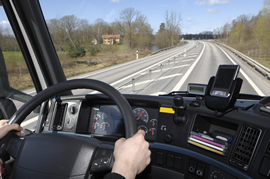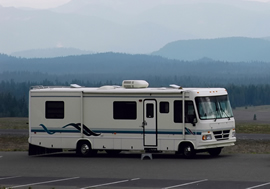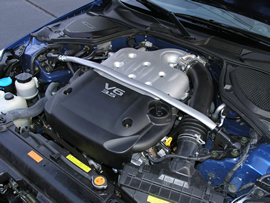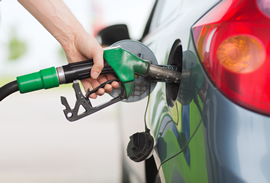
VEHICLES benefit
from the CVI Accelerator device








Below is an article from "Popular Mechanics" that I believe our future and current customers will find informative and interesting:
"Gas Gadgets that Really Work: DIY Auto"
Gas prices may be down, but so is the stock market—getting great mileage is still on our minds. PM has debunked more $10 gas saving gadgets than we care to remember: Here are some that really work.
BY MIKE ALLEN
DEC 18, 2009
Not a day goes by around here without a frantic phone call or e-mail from one or more readers. Gas is expensive, they say, and the increased costs of driving have pushed them to desperation. There must be some way to improve our mileage, right?
Usually, these folks have heard about some miraculous gadget that claims to improve fuel economy. Just add this magnet to your fuel line. Connect this hydrogen generator to your intake and run your car on water. Pour this additive into your tank and double your mileage. Sounds good—perhaps too good. Sites like eBay are rife with people shilling gadgets and potions, asking you to spend as little as 10 bucks or as much as thousands.
Regular readers know I've tested and debunked a wide range of these devices over the years. Some are just wacky, like the "ectoplasm trap" that promised to double your fuel economy with psychic energy. Some of them are based on a mistaken application of a technology that does work under other circumstances, such as water injectors. Others, like adding acetone to fuel, are plausible—at least if you don't know a lot about chemistry or physics.
Here's my take on gas savers: They don't work. Of course, many people do buy these devices and claim to achieve improved fuel economy. Therefore I must be wrong, right? And I'm probably in the employ of Big Oil and the car manufacturers, whose mission it is to impoverish the American public as rapidly as possible. Sorry, the world's not that simple.
IN MODERN CARS, THE MIXTURE RATIO OF AIR TO FUEL IS CONSTANTLY MONITORED AND ADJUSTED BY THE ENGINE COMPUTER. TAMPERING WITH THIS SYSTEM IS PROBABLY NOT GOING TO EFFECT MUCH CHANGE, CERTAINLY NOT THE 20 OR 50 OR 300 PERCENT INCREASES TOUTED BY SOME OF THESE HUCKSTERS. THERE AIN'T NO SUCH THING AS A FREE LUNCH.
BUT.
You can save fuel. The best way is to change your driving style. Actually, it's not the best way—it's the only way that doesn't involve mass transportation. The time-honored, albeit hackneyed, advice to avoid jack-rabbit starts is mostly true. There's an art and a science to driving for the best obtainable economy. You don't have to drive 55, but a judicious change in habits will save you money. Guidance, in the form of a dash-mounted display, will help.
Feather-Footing 101:
A lot of newer cars have real-time fuel-economy readouts on the instrument panel, although usually they are only one option on the driver information display, competing with such sundries as the trip odo, an outside air-temp readout or the oil-life monitor. If you're fortunate enough to have one of these, all you have to do is keep the display set to instant mileage and pay attention. I guarantee your economy will improve, even if you're not consciously trying to drive carefully. It's automotive voodoo. I'm sure the same phenomenon is what's responsible for the actual fuel-economy increases reported by the thousands of people who are wasting money on bogus gadgets. It takes a surprisingly small change in the amount of pressure on the gas pedal to influence the economy gauge.
There's a downside to most of these original-equipment gauges: They're mounted low on the instrument panel, and they tend to be small. You don't want to pay so much attention to how much gas you're saving that you crash into something. You might spill some fuel in the accident, after all.
Don't have an OEM gauge? Here are three gadgets you can retrofit to your car. Any one of them will help save gas.
Vacuum Gauge:
This is old tech. The engine's intake manifold is under negative pressure almost all the time when the engine is turning. The vacuum is higher (lower absolute pressure) at high engine revs and part-throttle, like when you're cruising along in gear. It's lower when the engine is ticking over at idle, even though the throttle is almost completely closed and is admitting hardly any air to the intake. And there's virtually no vacuum at wide-open throttle, when the engine is consuming the largest volume of air—and consequently the most fuel.
A vacuum gauge is a simple mechanical gauge, hooked into the manifold with some tubing. Some BMW cars have a vacuum gauge already built into the instrument panel—but it's cleverly calibrated not in inches of vacuum, but in miles per gallon. A lot of heavy equipment, trucks and most piston-engined aircraft have a vacuum gauge on the dash. Sorry, it won't work on diesels, which have no throttle blades and consequently have no manifold vacuum
A quick trip to the auto-parts store can score you a vacuum gauge to park on your dashboard for under $50, which isn't much when a fill-up can easily shred a $100 bill. The hardest part of the installation will be finding a hole through the firewall to route the hose. You can usually just sneak the hose through the grommet that the wiring harness already uses. I'd also wire the gauge's internal lighting into the same circuit as the panel lights, so it dims along with the dash. You might need a small adapter or tee to splice into an existing vacuum line underhood. All thumbs? Any decent mechanic should be able to install one in an hour.
Again, driving for the best mileage will come intuitively. Just maintain a high manifold vacuum as you drive.
ScanGauge:
If your car was manufactured after 1996, it has an OBD-II port. OBD is short for On-Board Diagnostics, and it's an industry standard for the interface to diagnostic equipment used by mechanics to repair and maintain the emissions control system. The OBD port, by regulation, is under the dash somewhere near the driver's kneecaps. A mechanic plugs his scanner tool into this port to check the trouble codes that make the Check Engine light come on. He can also monitor hundreds of engine parameters while the car is driven, giving him insight as to what a problem might be. You don't need a scanner to do this, though. You can use the ScanGauge, which plugs into the same connector and is designed to be mounted on the dash. The ScanGauge works like a scan tool, giving you trouble codes and letting you turn off the CE light. More important for the purposes of this story, it also has a number of trip-computer functions—including a real-time mileage monitor. There are plenty of other things you can monitor, too, such as manifold vacuum and fuel-injector opening. The ScanGauge is even hackable, so you can customize the readout and monitor virtually anything that's available on the vehicle's data like to drive along with the display reading out four things concurrently: instant mileage, distance to empty, percent of engine load and my favorite—the amount of money I've burned in the engine today. Using the ScanGauge, I've reduced the fuel consumed in my customary morning commute by a whopping 40 percent. The price is $170 (scangauge.com), but I've seen them for less in stores and on eBay. I suggest mounting the display on top of the dash, near your line of sight. It comes shipped with Velcro, but I prefer 3M Dual Lock. There are even some mounts available for attaching it to the rearview mirror
Kiwi:
The Kiwi is somewhat more consumer-oriented than the ScanGauge. This user-friendly device has most of the same scan-tool and trip-computer functions but uses a color organic LED display instead of a simple alphanumeric readout. It also does frilly stuff like letting you upload images to watch while in the car. Wheee.
BUT WAIT, THERE'S MORE: THE KIWI ACTUALLY HAS A TUTORIAL BUILT INTO ITS SOFTWARE THAT WILL TEACH YOU THE MOST ECONOMICAL WAY TO DRIVE. YOU'LL NEED A LIGHTLY TRAVELED ROAD TO USE THIS, OBVIOUSLY, BUT A HALF-HOUR OF PAYING CLOSE ATTENTION TO WHAT'S GOING ON UNDER YOUR RIGHT FOOT CAN SAVE A LOT OF MONE
TAGS:
Increase Car Performance | Gas Saving - Fuel Optimization | gas mileage improvement devices
